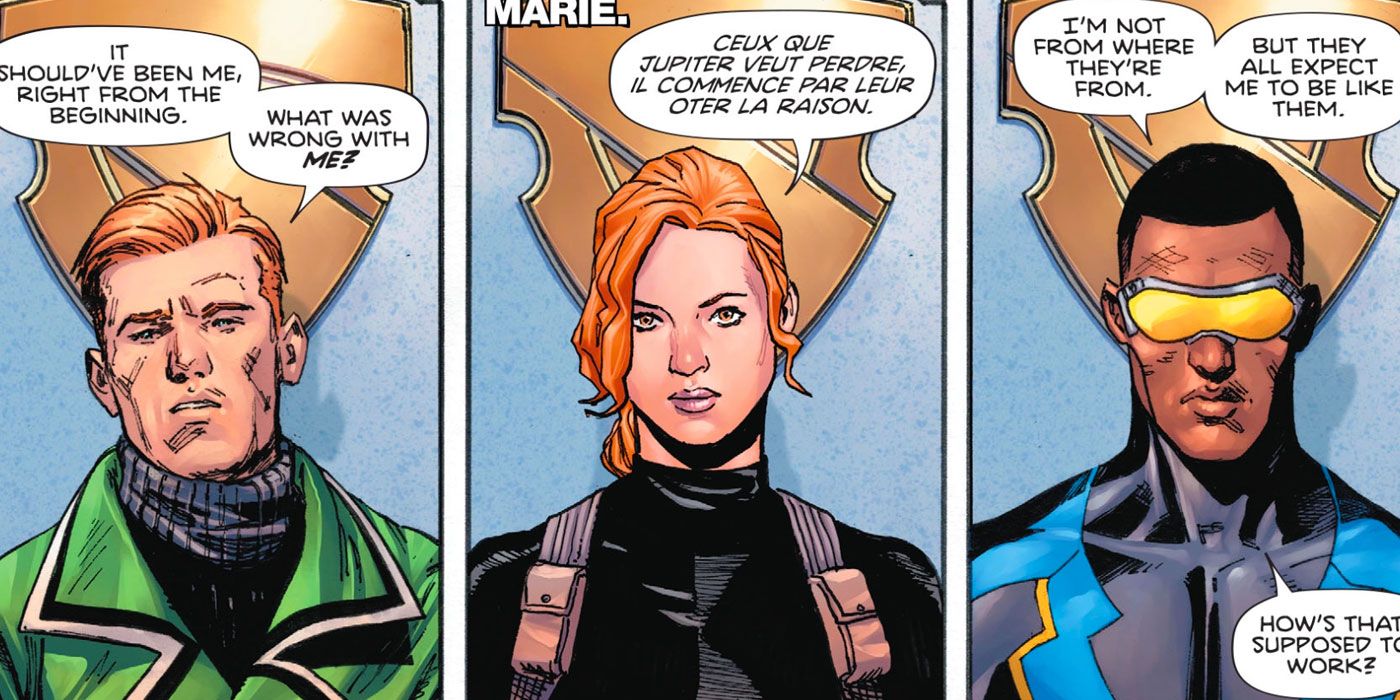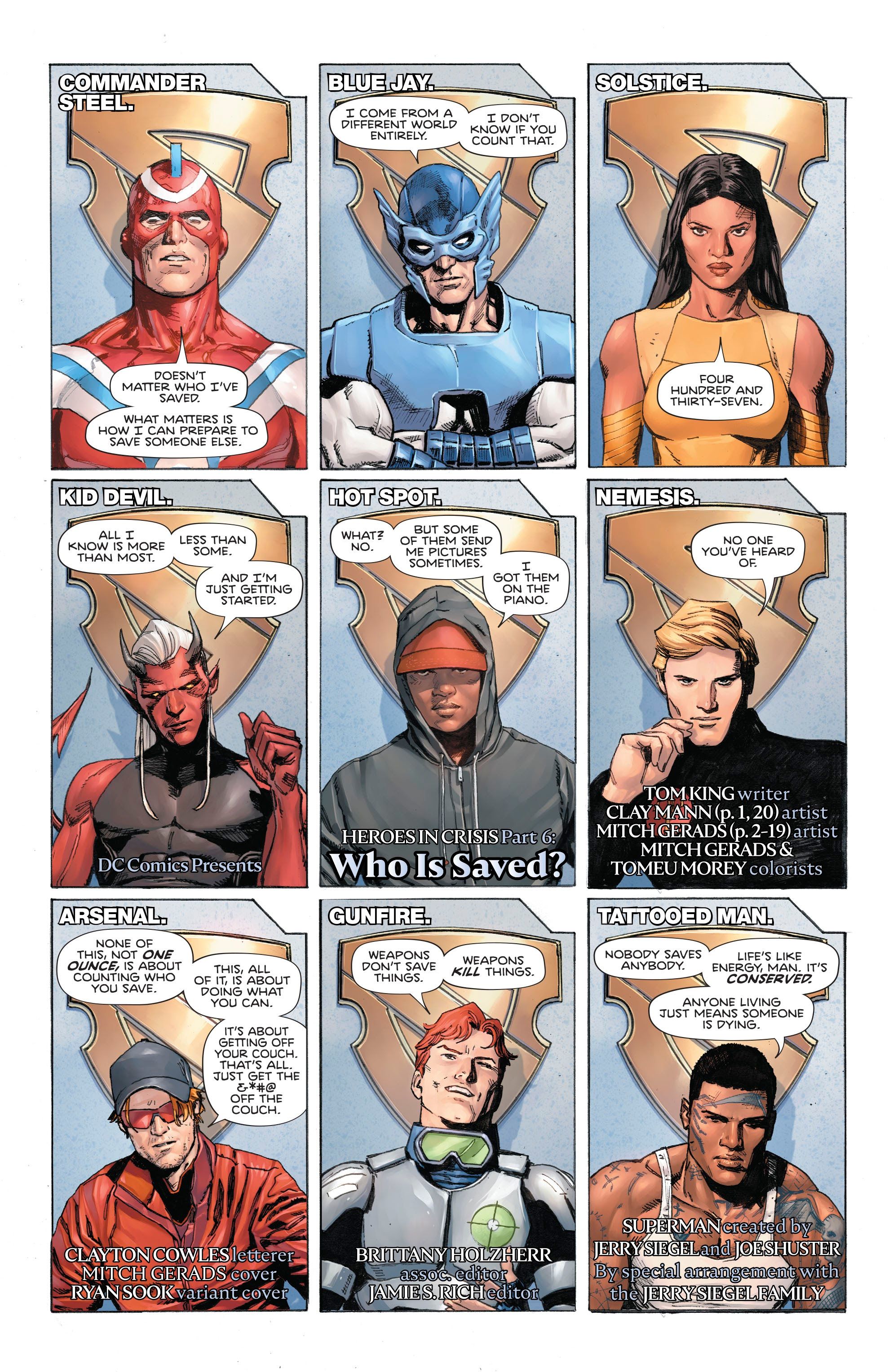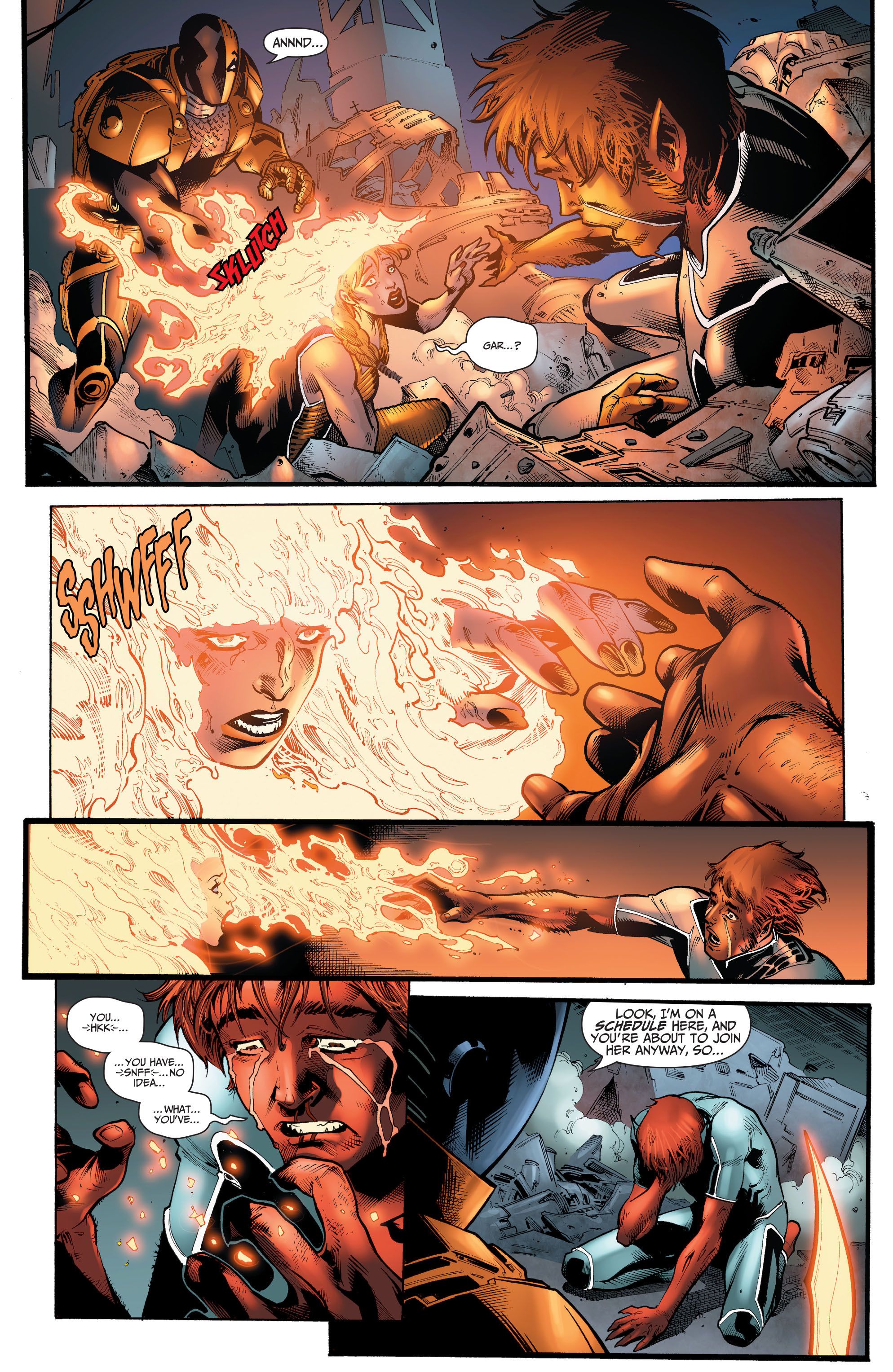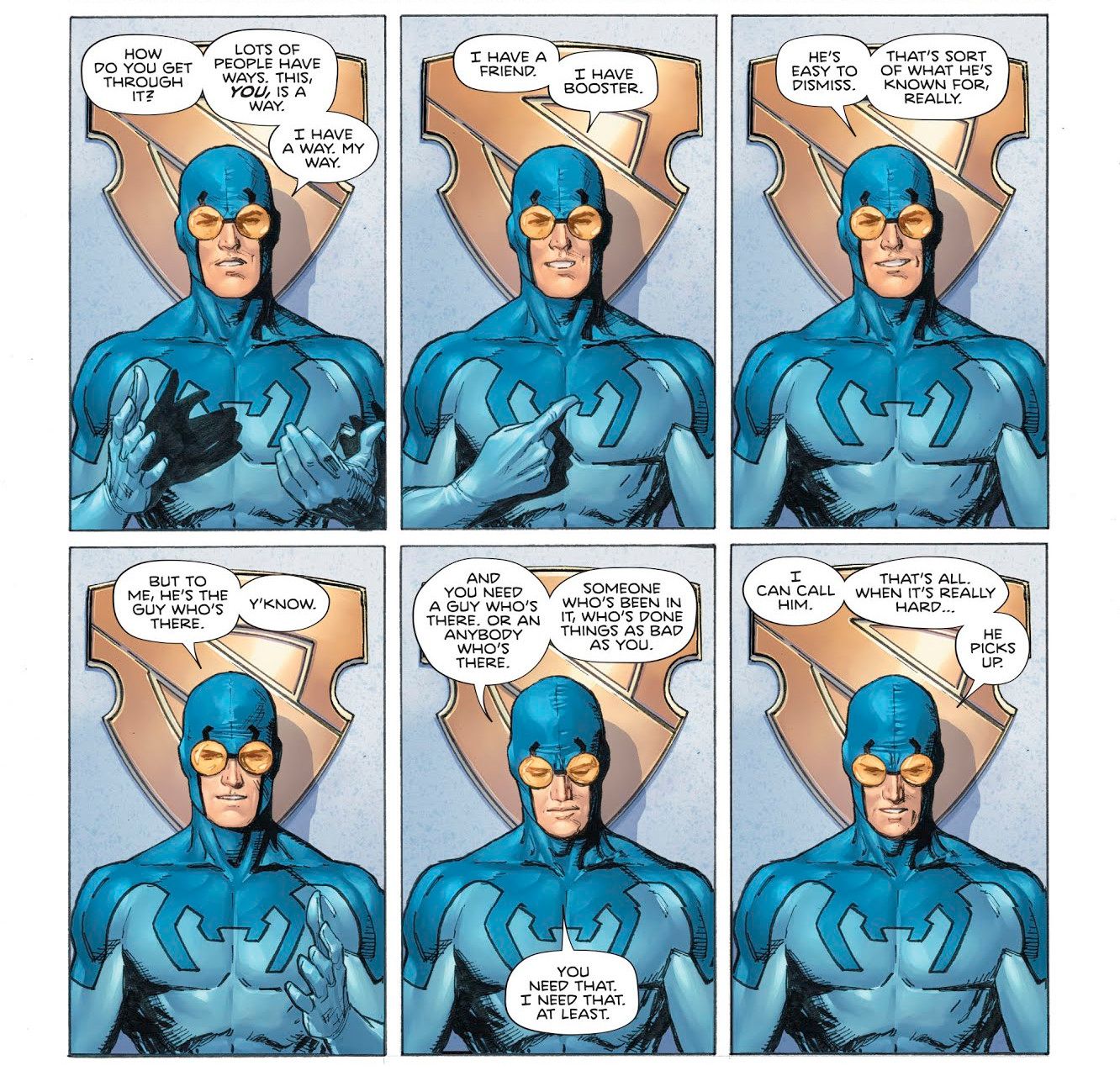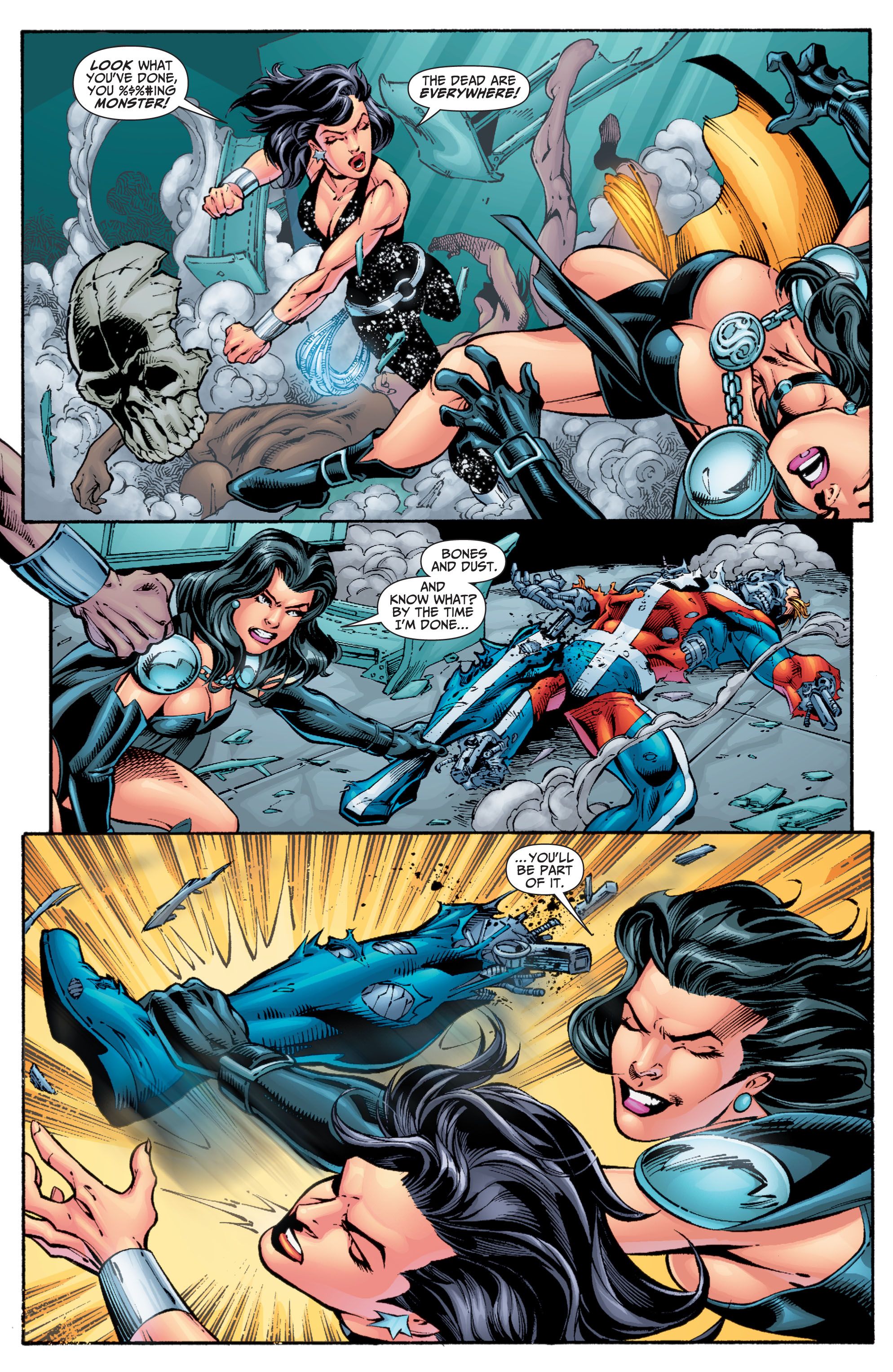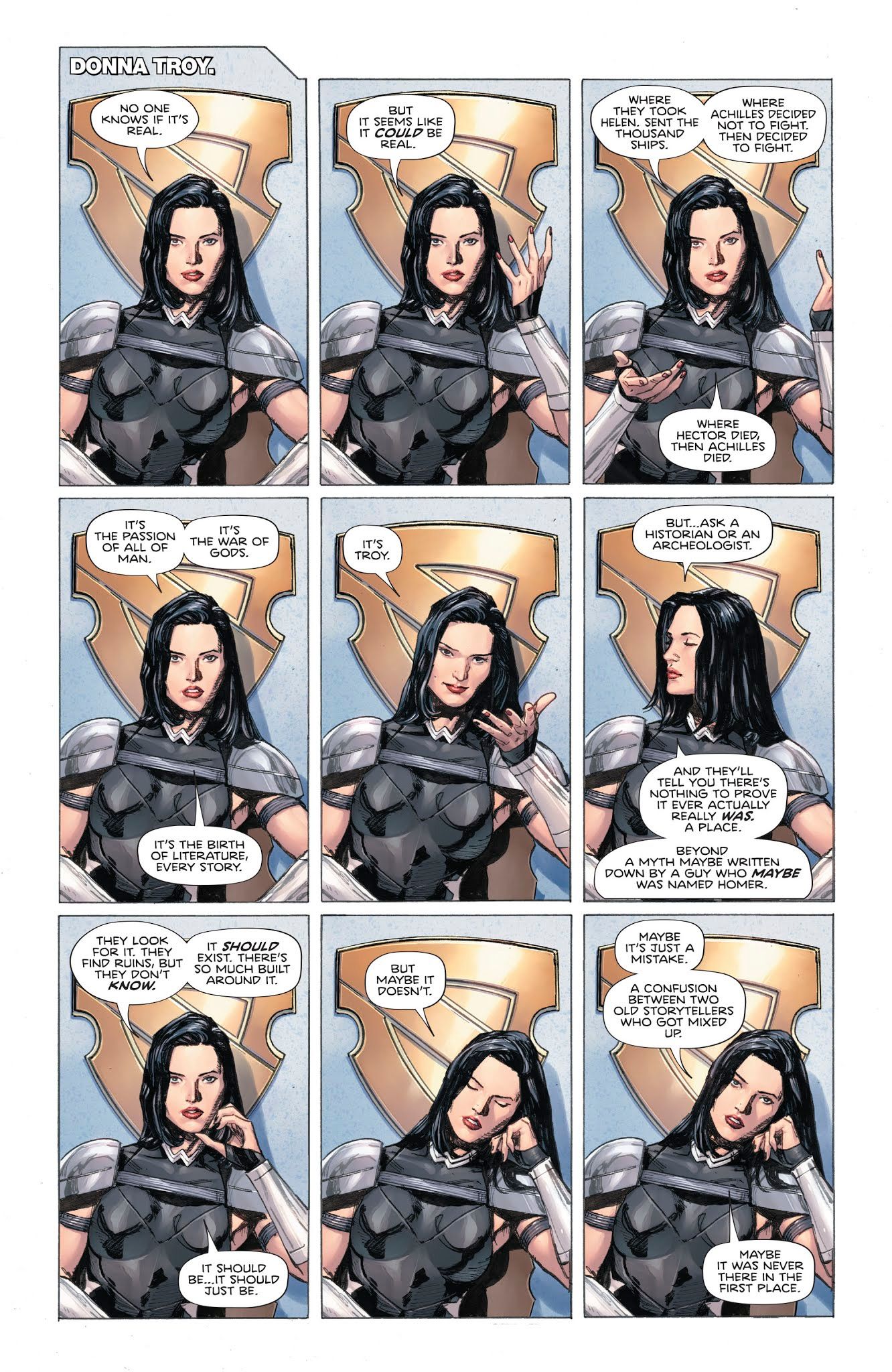WARNING: This post contains MAJOR SPOILERS for Heroes In Crisis, on sale now.
In DC's Heroes In Crisis miniseries, writer Tom King and his artistic collaborators have characters giving "confessionals" to the therapeutic artificial intelligence called Sanctuary. HIC's overall plot revolves around Wally "Flash" West's trauma after losing his family to a major continuity overhaul. Specifically, summer 2011's Flashpoint miniseries reworked DC's timeline for September 2011's New 52 relaunch. When that failed to catch on, DC relaunched again with May 2016's "Rebirth," re-integrating characters and stories from the pre-New 52 days.
Wally isn't the only character restored via Rebirth, with several such characters appearing in HIC's confessionals. Because they give readers yet more clues that those stories are once again part of DC history, today we'll look at what it might all mean going forward.
Rebirthed Roster
We begin the "Rebirthed" roll call with Nemesis, created by Cary Burkett and Dan Spiegle, who first appeared in September 1980's The Brave and the Bold issue #166. A master of disguise, Nemesis went from freelance adventurer to government agent.
Len Wein and Steve Erwin created Gunfire for 1993's Deathstroke The Terminator Annual issue #2. After his short-lived series ended (May 1994-June 1995), he bounced around the DC Universe of the early 2000s.
Mark "Tattooed Man" Richards (created by Geoff Johns and Ethan Van Sciver for April 2006's Green Lantern issue #9) may be most famous for his role in 2008-09's Final Crisis. He then starred in the Final Crisis Aftermath: Ink miniseries (July-December 2009) before joining Deathstroke's villainous Titans team in 2010-11.
Since Tommy Tomorrow normally operates in a somewhat-distant future, it's odd to see him here. Created by Jack Schiff, George Kashdan, Bernie Brestauer, Virgil Finlay and Howard Sherman for January 1947's Real Fact Comics issue #6, he became emblematic of DC's sci-fi Silver Age. This could also be a version of the present-day "T'om T'morra" from Keith Giffen's New 52 Threshold series (2013).
Bob Kanigher and Jerry Grandinetti created the World War II-era Mademoiselle Marie for August 1959's Star-Spangled War Stories issue #84. Decades later, "Mlle. Marie" had become a codename for various French intelligence operatives, including the present-day Josephine Tautin (created by Greg Rucka and Jesus Saiz), first seen in October 2006's Checkmate issue #5.
The Same Old Song
Many of HIC's confessionals are pretty straightforward. None of Harley Quinn's, Booster Gold's or Wally West's sessions dig very deep into the characters' histories. Multiple-character confessional pages in issues #3, #6 and #9 don't have space to discuss very much. Other confessionals also offer insight, but without specifics.
A few confessionals concern events which could belong to either timeline. Arsenal's drug use (first seen in August-September 1971's Green Lantern issue #85) also cropped up in his New 52 history, albeit under slightly different circumstances. When Guy Gardner says "it should have been me from the beginning," he could easily have been talking about his revised New 52 origin in November 2012's Green Lantern Corps #0. However, we think he means March 1968's Green Lantern issue #59, which showed that Abin Sur's ring chose Hal Jordan over the equally-qualified Guy simply because Hal was nearer. Similarly, when Beast Boy mentions Terra, he could mean 1984's classic "Judas Contract" storyline; or he might be thinking of the New 52 Terra who helped him escape the sinister Colony in Ravagers issue #12 (July 2013).
Memories Are Made Of This
Some New 52-ized characters seem to be talking about pre-New 52 events. For example, when June Robbins says she "wasn't on that plane," she means the crash which created the original Challengers of the Unknown in February 1957's Showcase issue #8. Conversely, she was on the plane when the New 52 rebooted the group in April 2012's DC Universe Presents issue #6.
The weekly Batman Eternal miniseries (June 2014-June 2015) brought Stephanie "Spoiler" Brown into the New 52; but her HIC confessional may refer indirectly to her brief Robin career (Robin issues #126-28, July-September 2004). Likewise, both the pre-superhero Red Devil and Blue Beetle (Ted Kord) appeared in the New 52; but neither assumed their familiar costumed identities until the Rebirth period.
Furthermore, HIC appears to restore Booster Gold and Blue Beetle's bromance. However, it chooses to ignore that Ted was murdered by League patron Max Lord in 2005; even though the variant cover of HIC issue #3 shows Max's subsequent death at Wonder Woman's hands.
Building on Leagues and Titans
Starting with December 2009's Justice League of America issue #38, writer James Robinson and penciller Mark Bagley teamed up next-generation characters like Donna Troy, Jade, Jesse Quick, and the Dick Grayson Batman. Their League also included HIC confessional subjects Blue Jay (joined around December 2010's issue #50), Guardian (March 2010's issue #41) and Doctor Light (January 2010's issue #39).
Denny O'Neil and Dick Dillin created Blue Jay for February 1971's JLofA issue #87, as the Ant-Man/Yellowjacket of an Avengers-like super-team. His Scarlet Witch-esque teammate, Silver Sorceress, died after defeating the Dormammu parody Dreamslayer (and after being shot by an arrow) in February 1992's Justice League Europe issue #35.
Joe Simon and Jack Kirby created Jim "Guardian" Harper for April 1942's Star-Spangled Comics issue #7; and Kirby introduced Harper's modern-day clone in January 1971's Jimmy Olsen issue #135.
First appearing in July 1985's Crisis On Infinite Earths issue #4, Kimiyo "Doctor Light" Hoshi was created by Marv Wolfman and George Pérez specifically to symbolize new beginnings. By May 1987 she was part of the latest Justice League. She put down Black Lantern Commander Steel in February 2010's Justice League of America issue #40.
Speaking of which, writer Gerry Conway and penciller Chuck Patton introduced the modern-day Commander Steel in 1984's Justice League of America Annual issue #2. He was killed in March 1987's Justice League of America issue #260, and Despero made sure he was dead in May 1990's Justice League America issue #38. Earth-3's Superwoman attacked Donna Troy with his corpse's leg in January 2011's Justice League of America issue #51.
Besides the Justice Leaguers, HIC also features a handful of obscure Teen Titans. Marv Wolfman and George Pérez created the Protector for some 1983 anti-drug comics featuring the New Teen Titans. Later, Wolfman and Pérez wanted Kole to be a Teen Titan just long enough to die in Crisis On Infinite Earths. Kole first appeared in June 1985's COIE issue #3, right before the Titans met her in that same month's New Teen Titans issue #9. She died in March 1986's Crisis issue #12.
Dan Jurgens created Isaiah "Hot Spot" Crockett for October 1996's Teen Titans issue #1. His current codename comes from Season 2, Episode 9 of the Teen Titans animated series (March 4, 2004). Erik Larsen and Eric Battle created Lagoon Boy for December 1998's Aquaman issue #50. He went on to work with Young Justice and a later Titans group, but a fight put him in a coma in January 2008's Titans East Special. Dan Mishkin, Gary Cohn and Alan Kupperberg created Red Devil (then known as Kid Devil) for Blue Devil's debut in June 1984's Fury Of Firestorm issue #24, and he became Kid Devil in July 1985's Blue Devil issue #14.
Created by Steve Skeates and Nick Cardy for March-April 1971's Teen Titans issue #32, Gnarrk popped up just as the New 52 was on its way out, in December 2015's Titans Hunt issue #1. That miniseries brought together as many of the original Titans as had appeared in the New 52 to that point; and revealed their secret history in the truncated timeline.
This brings us to Donna Troy. Both the Titans and the 2010-11 League rely on her involvement, and they in turn are rooted deeply in DC's pre-New 52 legacy-hero structure. Put simply, if you're going to say that those teams existed, you're going to have to support them with a lot of older continuity. HIC alludes to this with a mural in issue #4 which depicts the original Teen Titans in their classic costumes; and a panel in issue #6 which casts the Rebirthed Titans in the same poses as the cover of November 1980's New Teen Titans issue #1. Reintroducing the original Teen Titans as a sort of continuity patch via the miniseries demonstrated DC's desire to restore that legacy structure; and HIC appears to go even further.
Donna's issue #4 confessional is both clever and telling, using the legend of the city of Troy as a metaphor for Donna's own confusing continuity. The New 52 Wonder Woman reintroduced Donna as an Amazonian assassin who (beginning in Titans Hunt) started to act more like her prior self. Donna seemingly explains this contradiction in the confessional, by saying that Troy "should just be," because "[t]here's so much built around it."
Although Heroes In Crisis doesn't come right out and say it, these confessionals imply very heavily that the pre-New 52 DC Universe is, for all practical purposes, back in play. It may give readers headaches, but at least those older stories are once again being used to inform major and minor characters alike. As Donna says, there's just so much built around them.

